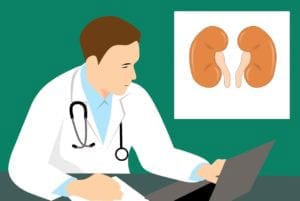Vasculitis
What is vasculitis?
Vasculitis refers to inflammation of the blood vessels, which can cause multiple negative side effects to the affected vessels. They can narrow, which restricts blood flow, or close altogether, which keeps blood from getting through, resulting in organ and tissue damage. They can also stretch and weaken so much that the vessel bulges. That is called an aneurysm, and if it bursts, it can cause dangerous bleeds inside the body. There are a large number of disorders that may be characterized by or associated with vasculitis. There are also multiple subtypes of vasculitis, grouped based on the size of the blood vessels they affect. It can affect veins and arteries of any size, one to several organs at a time, and can be acute (short) or chronic (long lasting). Vasculitis affects males and females equally, and it is most commonly seen in the elderly.What are the symptoms of vasculitis?
Since vasculitis can affect specific organs and body systems, there’s quite a range of symptoms that vary in type and severity. It should be noted that an individual will not show all of the symptoms listed below at once; the symptoms they show will depend on type, organs affected, and severity of the condition.- Fever
- General aches and pains
- Swelling
- Loss of appetite
- Weight loss
- Fatigue
- Headaches
- Night sweats
- Rash
- Numbness and weakness
- Blood clots
- Lesions, spots, bumps, bruises, hives, or itches on the skin
- Arthritis in the joints
- Shortness of breath
- Inflammation of the sinuses
- Inflammation of the lungs
- Ulcers in the mouth
- Middle ear infections
- Red, itchy, burning eyes that may blur and become sensitive to light
What causes vasculitis?
The exact cause of vasculitis is not totally understood, but in most cases, it is thought to be due to disturbances in the body’s immune system. This means that for some reason the immune system attacks the blood vessels by mistake. Some types of vasculitis may be due to an allergic reaction or hypersensitivity to certain medications. Others may be because of infections or autoimmune disorders.How is vasculitis diagnosed?
Because there is a wide range of symptoms and types, an extensive physical examination and recording of medical history is required to make a clear diagnosis. Other procedures for diagnosing includes:- Blood Tests
- Biopsy
- Blood pressure
- Urinalysis
- EKG (Electrocardiogram)
- Echocardiography
- Chest X-ray
- Lung function test
- Abdominal ultrasound
- CT scan
- MRI
- Angiography
What are the treatments for vasculitis?
The main goal of treatment is to stop inflammation. Vasculitis treatment includes, but is not limited to:- If the vasculitis is appearing with another disease, treatment of that underlying disease
- If the vasculitis affects particular organs or parts of the body, consulting with a specialist that works with that part of the body
- Steroids
- Medication to control inflammation (corticosteroids)
- Possible options: prednisone, cyclophosphamide, methylprednisolone and pentoxifylline
- Medicines that kill the cells causing inflammation (cytotoxic medicines)
- Possible options: azathioprine, methotrexate, and cyclophosphamide
- Medication to prevent flare-ups
- Surgery
Where can I find out more about vasculitis?
Vasculitis Articles

Updated ANCA-Associated Vasculitis Guidelines Aim to Improve Care
James Moore
March 6, 2024
Read More »


Seventeen Pediatric Patients Had Spontaneous Recovery From IgA Vasculitis-Associated Nephritis
Rose Duesterwald
August 11, 2022
Read More »

Two Teenage Boys Diagnosed With ANCA-Associated Vasculitis, Part Two
Rose Duesterwald
February 17, 2022
Read More »

Two Teenage Boys Diagnosed With ANCA-Associated Vasculitis, Part One
Rose Duesterwald
February 16, 2022
Read More »

Two Recent FDA and EMA Approvals Bring Hope to ANCA Associated-Vasculitis Patients
Rose Duesterwald
January 13, 2022
Read More »

Males With ANCA-Associated Vasculitis Not at Higher Risk of Death or Kidney Failure
Alyssa Stevens
November 16, 2021
Read More »

New Therapy for Eosinophilic Granulomatosis with Polyangiitis May be Coming to Europe
Trudy Horsting
October 6, 2021
Read More »






